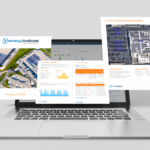We’re living in a time of uncertainty as COVID-19 continues to impact all of our day to day lives. While the potential negative economic impact that the pandemic could have on the U.S. solar and energy storage industry can’t yet be fully known, the early data is not looking good. In a recent letter that SEIA (Solar Energy Industries Association) sent to members of Congress, they wrote: “We are already seeing a significant contraction in the residential installation sector – cancellations were initially up by 30% in some markets and could reach 50% in many places, new sales are down similar amounts.” The president and CEO of SEIA, Abigail Ross Hopper separately gave a sobering stat: “We are faced with a reality we can’t ignore: the solar industry could lose up to half its workforce as a direct result of COVID-19″.
It’s important to note that these stats are only rough estimates at this point, and may be worst-case scenario figures, based on how COVID-19 spreads. But either way, we should all be paying extreme caution to what’s ahead in this new age of “social distancing.” It’s obviously not possible at this point in time for anyone to know how long this period will last when the peak will be reached, and how effectively we’ll be able to “flatten the curve”. But it seems likely that this dropoff in activity we’re currently seeing will accelerate more before things start getting better.
Solar and energy storage industry marketers need to be thinking about how they’re going to operate differently during this downturn. Here are 3 simple yet effective marketing strategies that your team should be focusing on and that we plan to utilize on our own team:
Re-optimize your Google AdWords account
Most established solar installation companies are likely already very active on Google AdWords and other paid marketing platforms, like Facebook, Twitter and LinkedIn. At Energy Toolbase, Google AdWords – SEM (search engine marketing) has consistently been one of our best digital marketing channels. Once marketing campaigns are created and ad budgets are set, these tools can sometimes operate on auto-pilot. Good digital marketers keep a close eye on how their campaigns are performing and constantly adjusting and iterating. It takes time and effort to digest all the data, determine which campaigns are performing best. During these unprecedented times, it’s especially important to monitor your campaigns and adjust accordingly.
With solar conferences and events getting canceled over the next quarter or two, more marketing dollars may get shifted onto digital SEM spending. This will likely mean that the AdWords market (and other SEM platforms) for certain keywords may get more competitive. It’s critical to assess how you’re performing and ranking versus the competition, and really making sure that you’re spending your ad dollars prudently.
Content creation is more important than ever
As a result of less face to face interactions, the company created content that will likely take on more importance during this uncertain period. Solar industry marketers need to be creative in identifying high-value, relevant topics to be creating content around in the coming months. At Energy Toolbase, we’re always brainstorming important industry topics that we think our audience would be interested in hearing about. We’ve had a lot of success in the past with picking interesting topics, and then looking for subject matter experts to join us as presenters on our webinars. These have oftentimes been our most well-attended webinars. These can be great marketing ROI (return on investment), as they can be developed and produced in-house, and then the content can live evergreen online for months and years to come. When we’ve reached out to industry experts or older customers on ideas like this, we’ve had an incredibly high response rate. So don’t be afraid to reach out and ask. Also, with more time on our hands, now is as good a time as any to interview and feature older customers or case study projects on your blog page. The best digital marketers are masters at producing great, relevant content that their audience wants to see, and then distributing it in several forms, like webinars, blogs, or case studies.
Dial-in your email marketing game
Now’s also a great time to re-optimize your email drip marketing campaigns. Similar to SEO and SEM, email marketing is always a work-in-progress. Going back to the whiteboard with your drip campaigns could take on many forms. These could mean running new A/B tests on existing campaigns or starting new nurturing campaigns, or reaching back out to customers who were on the fence at one point. This could include trying out new subject lines, tweaking messaging copy, or using new images or offers.
We’re all likely seeing a huge increase in the amount of COVID-19 related emails in our inbox. Our suggestion here is that if you have something important to say like your sales and support staff will remain available and working during this period, then you should absolutely reach out to your customers and communicate it. But don’t send yet another COVID-19 email just to send one. We think this principle applies to drip marketing in general. We’re always trying to be mindful about not over-doing it. We want to share great content, not annoy or alienate our leads and customers.
Another thing to consider is that many people have more time on their hands than usual working from home. So whether you’re just sharing a recent piece of content you published, a weekly blast, or monthly newsletter, now’s a time where email open rates go up given that people have more time on their hands.
In summary, solar and energy storage company marketers need to be strategic during this uncertain time. If you have additional thoughts or strategies that you’re utilizing, we’d love to hear them. And just like you, we’re working on staying up to date on the latest information related to COVID-19 and the solar industry. Here are a few resources we’ve found useful:



